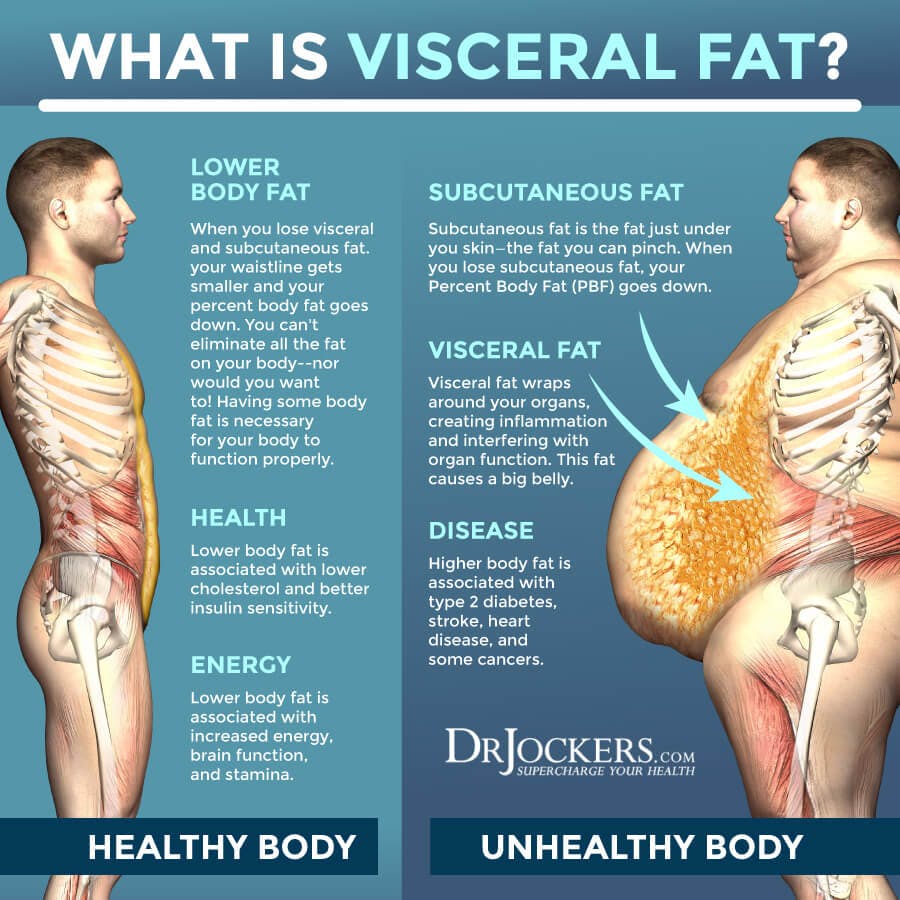I recently embarked on a total body overhaul; a mission to reduce body fat to levels…
My Latest Dexa Scan Says I’m 20% Body Fat – But Is This The Whole Story?
Last week I got a Dexa / Body Composition scan. It had been 6 months since my last Dexa scan and I was hoping for big things – both in body fat percentage AND visceral fat mass.
My previous scan was on 26th April 2024 and came after (minor) knee surgery on the 5th April.
It also came during a time I was working at an extremely sedentary job that required office attendance at least 4 days per week and, with it, 2 hours per day commuting to the office. That the office environment was somewhat turgid only added to my physical malaise.
I was also dealing with the globally publicised results of a Coroner’s Inquiry into the death of a close family member. Reading about a loved one in the news, as the story, is deeply confronting and put me into a deep depression. When one is depressed, one looks for various ways to numb the pain. Exercise was one, but there were others.
Scan 1 – April 2024
Some of the key stats from that scan were:
Total Body Weight 91.75kg
Total Body Fat 23.6%
Fat Mass Index 6.41 (in the “excess fat” range)
Visceral Adipose Tissue Area 88.2 cm2
Subcutaneous Adipose Tissue Area 103.4 cm2
I’ve been doing Body Composition scans for a long time, and this result was worse than even my ‘worstest’ expectations.
A scan from 2015 (admittedly) shows an 80kg bodyweight and a 10.8% body fat. Others hover around that level. 23% just isn’t going to cut it, notwithstanding the extra 0.6%. Isn’t it amazing what can happen in 10 years?
So, having thrown myself into a Hot Dad (European) Summer and amped up the weight training and started tracking virtually every calorie I consume, I had a pep in my step as I bounced into Spectrum Medical Imaging for my latest scan.
After all, my bathroom scales couldn’t lie, could they? Nor could my beloved Blondie who, whilst admitting to liking me with a bit more timber around the middle, couldn’t help the admiring glances coming my way as I pose-down in the mirror before bed each evening.
And, waiting on the results with #superfitkid in the waiting vestibule, I was confident the stats would fall in my favour, normal service would be resumed and I’d be back in the 15-16% bodyfat range.
Alas, it was not to be.
Despite my weight falling by 5kg to 86.6kg, my body fat percentage resolutely refused to budge – still lingering, nay clinging, to its 20’s like a Peter Pan-man refusing to accept the passage of time.
It showed a horrific 21.5% (the gratuitous lad photo shows what 21% PBF looks like…sad) – f*ck me dead…
But as I pored over the report, hoping upon hope that I’d mis-read the numbers, I noticed something that piqued my curiosity. My keys stats read like this.
Scan 2 – October 2024
Total Body Weight 86.6kg
Total Body Fat 21.5%
Fat Mass Index 5.51 (in the “normal fat” range)
Visceral Adipose Tissue Area 69.3 cm2
Subcutaneous Adipose Tissue Area 82.6 cm2
When I ran a comparison between April and October this is what I was met with:
| Metric | April | October | Change |
| Total Body Weight (kg) | 91.75 | 86.6 | -5.6% |
| Total body Fat (%) | 23.6 | 21.5 | -8.8% |
| Fat Mass Index | 6.41 | 5.51 | -14% |
| Visceral Adipose Tissue Area (cm2) | 88.2 | 69.3 | -21.4% |
| Subcutaneous Adipose Tissue Area (cm2) | 103.4 | 82.6 | -20.11% |
Yes, my body fat percentage hadn’t plummeted, stone-like, in the way I’d hoped (although an almost-9% drop wasn’t actually too shabby).
But what I did like was the 21% drop in visceral adipose tissue AKA visceral fat.
Why Visceral Fat Is In Cahoots With The Devil
Because visceral fat is one bad mutha f*cker – an absolute widow-maker. It’s the nasty yellow fat that clings, ghoulishly, around your internal organs, shows mostly around the belly, and sets you up to suffer, big time.
Just some of it’s nefarious accomplishments are outlined below by the US Govt’s National Centre for Biotechnology Information (which sounds like it could be a made up website but I’m have faith its real) :
“It has been distinctly linked to several pathological conditions including impaired glucose and lipid metabolism, insulin resistance, increased predisposition to cancers of the colon, breast and prostate, and it is associated with prolonged hospital stays, increased incidence of infections and non-infectious complications, and increased mortality in hospital .” [Source: National Centre For Biotechnology Information (US Govt) https://pmc.ncbi.nlm.nih.gov/articles/PMC3473928]
See?
I wasn’t joking about it being one BMF. And this is just one website / paper. I could’ve chosen any one of thousands of others.
Unlike its relatively healthy brethren, subcutaneous fat, and like the hours after midnight on a night out, nothing good comes of visceral fat.
And it’s a sneaky mo-fo, too.
“Visceral fat piles up when you binge on junk food, skimp on exercise, and stress out like a maniac. Add in crappy sleep and too much booze, and you’ve got the perfect storm.”
It even preys on you when you’re at your lowest and most stressed. When you’re stressed, cortisol rises, and cortisol tells your body to store fat, especially around the belly and organs.
When stressed, people tend to make worse food decisions which typically leads to weight gain when the calories aren’t properly exercised away. (https://this.deakin.edu.au/self-improvement/eat-unhealthy-food-youre-stressed)
So we get this non-virtuous cycle of stress making us eat badly and exercise less, which is an absolute boon for visceral fat in our bodies.
In case there was any doubt or you’re just more of a visual person, this image shows the damage and dangers of too much visceral fat:

Reflecting on the time of my first scan in April I had the following boxes ticked:
- Stressful life circumstances – dealing with family tragedy
- Stressful work life – owing to #1 and “other factors”
- Eating a lot of junk food – (Maccers close to office and relatively cheap)
- Poor sleep – owing to daily late night calls to UK re: #1
- Not exercising as much as normal – because of in-office work requirements
- Sedentary lifestyle – two hours per day commuting / very desk-bound
- Numbing pain with alcohol
A perfect visceral fat storm – and terrible for my physical and mental health.
How To Banish (Or At Least Reduce Visceral Fat)
I don’t truly know if my actual visceral fat mass is considered to be a good or healthy level.
But it’s trending down, which has to be good. I feel much better and, in the mirror when I’m flexing, I look considerably better.
So what steps did I take to arrest the fat mass increase and start to chip away at it?
1. Removed Some Of The Stresses
I left a job I didn’t enjoy, and, with it, the two hour daily commute and all the other noise that wasn’t serving me in any way.
This brought new stresses – money, anyone – but, by jingo, the time, the freedom, the lack of abject misery from being sat in a cell like a caged animal.
2. Got Busy In The Gym
With my newly – and temporarily – created free time, I prioritised fitness and, specifically, weight training.
Weight training, especially for older guys (and gals), is critical for maintaining bone density and muscle mass, both of which diminish with age. What folks don’t often get is that weight training done properly is also far better for fat loss than a lot of cardio. It also boosts testosterone and makes you feel strong and dominant (possible placebo here but I’ll take it).
If you’re new to the game you can check out this post to help you get started with a basic ‘push, pull, legs’ program in the gym.
And the (current) squeeze seems to like the outputs, too, which is always a bonus.
3. Counted Every Calorie
I use My Fitness Pal to track my calories to make sure I’m burning off more than I consume (and therefore in a calorie deficit).
This is actually quite hard but it attunes you to the fact that some foods don’t serve you as well as others, and, therefore, you should focus on getting in as much protein as possible in as few calories as possible.
I’m a closet data junkie so this is actually not a chore. The ‘chore’ is not eating the good stuff that doesn’t really serve you.
4. Cut Out The Junk Food (well, reduced it a lot)
Not working in the City means I can curate my meals far more easily and don’t get tempted to nip to Maccers whenI’m either hungry or stressed, or both.
5. Cut Out Alcohol
I have to be honest; this one hasn’t worked so well.
I like cooking, I like wine with a meal, I like a beer with the boys – and I’m extremely good at it. Too good, in fact.
But it’s a WIP and tracking my sleep every night using my Oura ring gives me a pretty good read on when I’ve done well and when I haven’t.
Final Thoughts
Getting a body composition scan (whether it be DEXA or InBody doesn’t really matter) is an incredibly useful tool for tracking some key health metrics, namely percentage body fat (PBF) and visceral adipose tissue (visceral fat).
It tells you, very accurately, the direction these markers are heading in and, for me at least, keeps me very accountable.
My advice (as a non-medically practising regular exerciser) is to get these done every quarter or 6 months, but don’t get too obsessed with body fat percentage because there’s often some beautiful devils lurking in the details.
Oh, and pay attention to that pesky visceral fat – it’s a killer. Literally.
SFD



